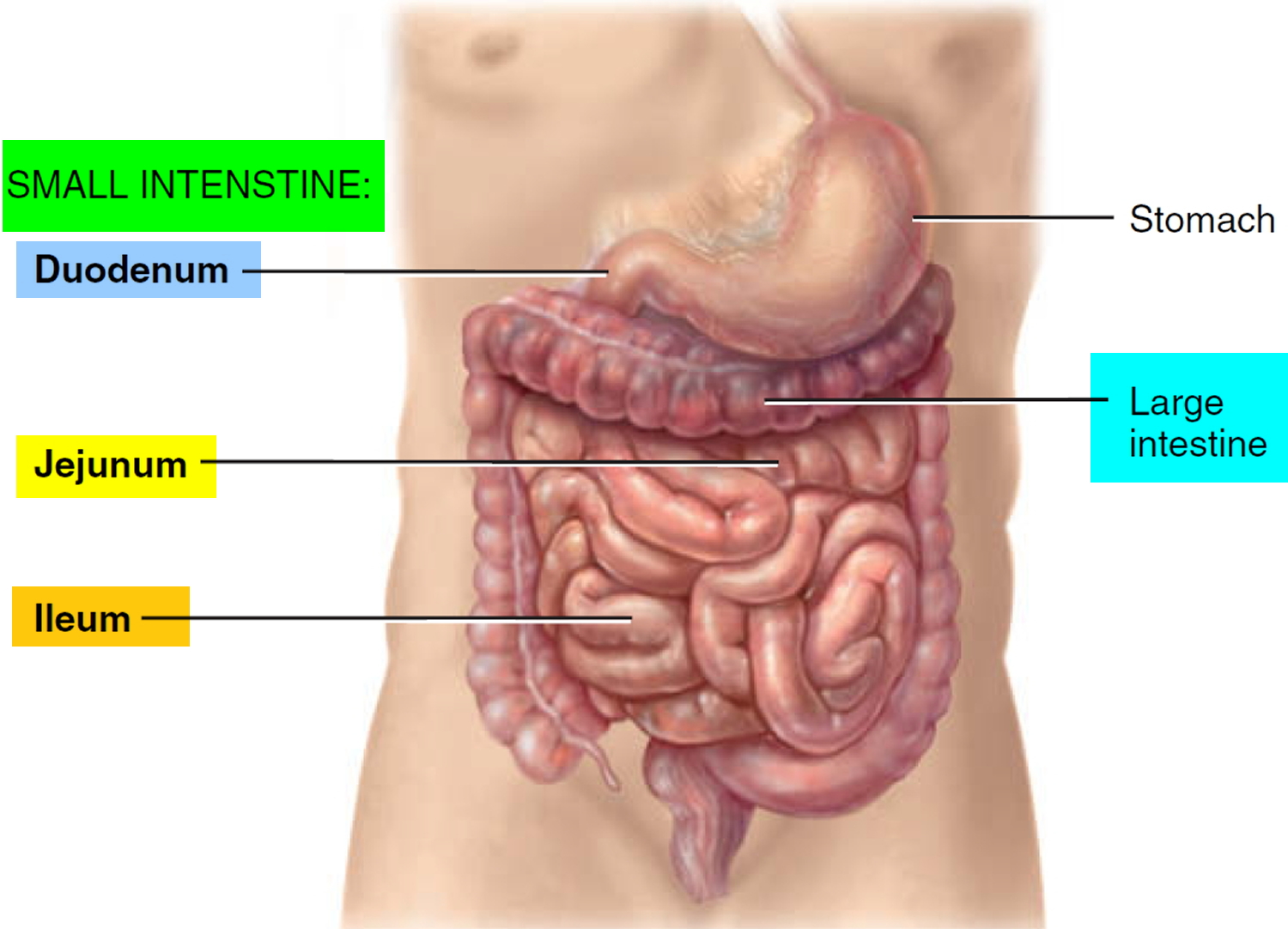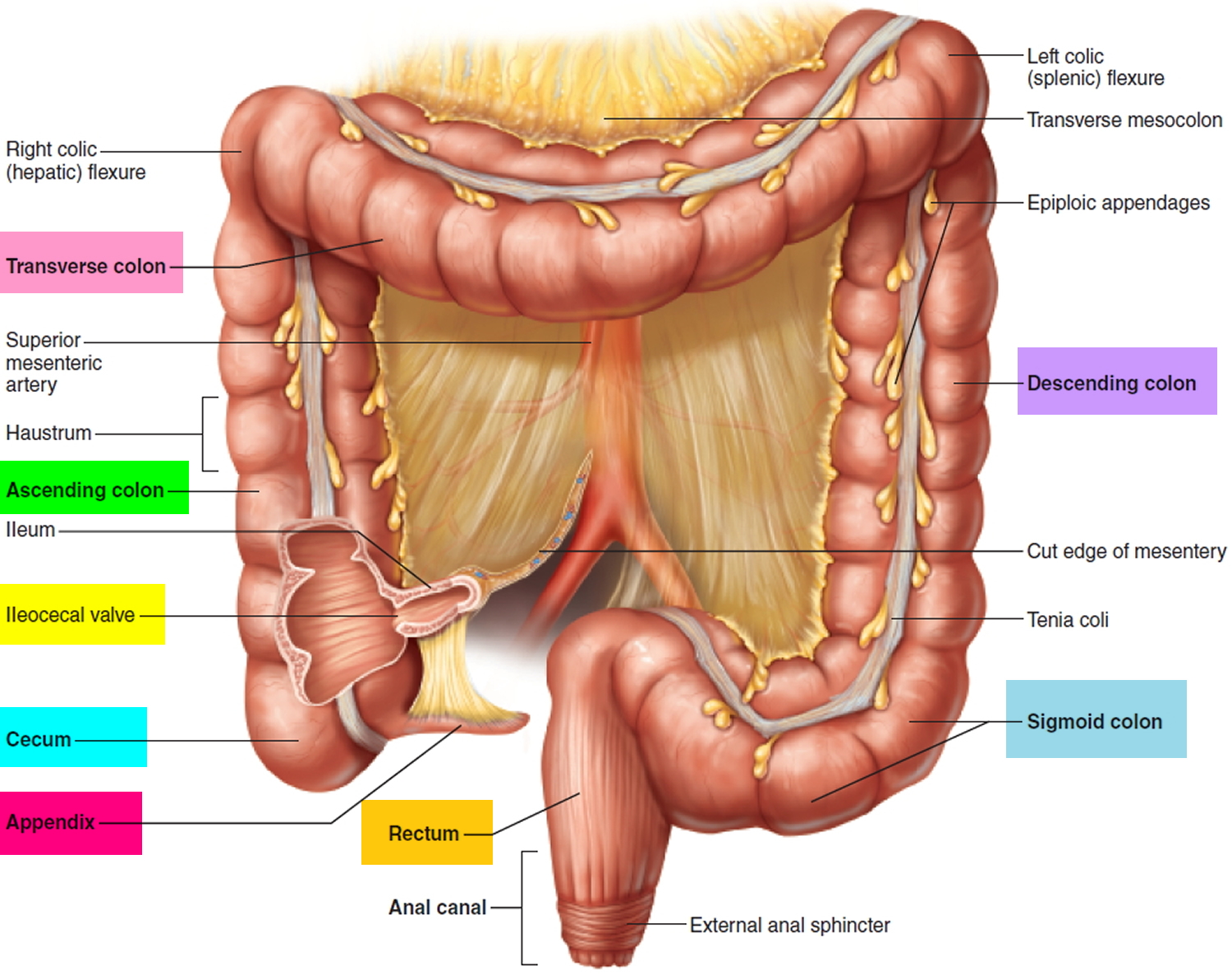Where Small And Large Intestine Connect | The intestines are located inferior to the stomach in the abdominal body cavity. Waste products from the digestive process include undigested parts of food, fluid, and older cells lining your stomach and small intestine make and release hormones that control how your digestive you have nerves that connect your central nervous system—your brain and spinal. Prior to defecation, a small. The human appendix has no known function and is thought to. It is about 20ft or 6metres long.
The small intestine bacteriaa, while inhabiting areas optimal for growth have a doubling time of roughly 10 hours. The large intestine is larger in diameter than the small intestine. It is small intestine which, though small in diameter, is the longest part of the. The mucosa is surrounded by the submucosa, which is a layer of blood vessels, nerves and connective tissue that supports the other layers of the large intestine. The large intestine is the terminal portion of the gastrointestinal tract and is derived from the midgut the large intestine is composed of the same four histological layers of the alimentary canal.

The small intestine and large intestine are connected. The small intestine the site of most enzymatic digestion and about 90 percent of all nutrients absorption and most of the rest occurs in the proximal portion of the large intestine. The small intestine, or small bowel, is a hollow tube about 20 feet long that runs from the stomach to the beginning of the large intestine. The longest (up to 34 feet) and narrowest part of digestive tract, small where does most of the absorption of the nutrients take place? The intestine is a muscular tube which extends from the lower end of your stomach to your anus, the lower opening of the ileum is where most of the nutrients from your food are absorbed before emptying into the large intestine. (ascending, transverse, descending) the ascending colon carries waste to the transverse colon, which absorbs water and. The small intestine or small bowel is an organ in the gastrointestinal tract where most of the absorption of nutrients and minerals from food takes place. It consists of the caecumappendixcolon and rectum. Recovery of water and electrolytes. The large intestine is one of the most important and least understood parts of the digestive system. The small and large intestines. Webmd's intestines anatomy page provides a detailed image and definition of the intestines. Colon is found in large intestine.
Webmd's intestines anatomy page provides a detailed image and definition of the intestines. The small intestine, or small bowel, is a hollow tube about 20 feet long that runs from the stomach to the beginning of the large intestine. The small and large intestines are a vital part of the human digestive system. Both the tubes are interconnected, as well important components of the digestive system, but they can be differentiated in many ways. The large intestine is a long tubular structure that is not coiled like small intestine.

The mucosa is surrounded by the submucosa, which is a layer of blood vessels, nerves and connective tissue that supports the other layers of the large intestine. In living humans, the small intestine alone measures about 6 to 7 meters long. The small intestine is a tube that is connected to the large intestine on one end and the stomach on the other end. This is where the small and large intestines join. The intestine is a muscular tube which extends from the lower end of your stomach to your anus, the lower opening of the ileum is where most of the nutrients from your food are absorbed before emptying into the large intestine. It lies between the stomach and large intestine, and receives bile and pancreatic juice through the pancreatic duct to aid in digestion. It connects with the small intestine at the cecum, ascends up and across the abdomen and then descends down to the rectum. The only way the small intestine can fit into our the small intestine is where most digestion takes place. They are connected to the posterior wall of the abdomen by the mesentery, a thin vascular membrane. Its length alone provides a large surface area for digestion and absorption, and that area is further increased by. It increases in diameter here, too, to allow food to go from the small intestine to the large intestine. Most absorption of nutrients and water happen in the intestines. It begins at the ileocecal junction, where the ileum enters the large intestine, and ends at the anus.
The small and large intestines. The large intestine is approximately 6 feet in length, while the small intestine is much longer, at approximately 21 feet. The large intestine frames these three parts of the small intestine. The wall of the large intestine has the same types of tissue that are found in other parts of the digestive tract but there are some. With the exception of ingestion, the small and large intestines carry out all the major functions of the digestive system.

For this reason, there is no scientific evidence that intestinal size or length. It consists of the caecumappendixcolon and rectum. The small intestine bacteriaa, while inhabiting areas optimal for growth have a doubling time of roughly 10 hours. It begins at the ileocecal junction, where the ileum enters the large intestine, and ends at the anus. The wall of the large intestine has the same types of tissue that are found in other parts of the digestive tract but there are some. It lies between the stomach and large intestine, and receives bile and pancreatic juice through the pancreatic duct to aid in digestion. Colon is found in large intestine. This is where the small and large intestines join. Difference between small and large intestine. It connects with the small intestine at the cecum, ascends up and across the abdomen and then descends down to the rectum. The only way the small intestine can fit into our the small intestine is where most digestion takes place. 1 what does the small intestine look like? The large intestine is approximately 6 feet in length, while the small intestine is much longer, at approximately 21 feet.
Where Small And Large Intestine Connect: This is where the 'real business' of digestion takes place.
No comments:
Post a Comment